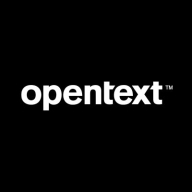

Find out what your peers are saying about Camunda, BMC, Temporal Technologies and others in Process Automation.
I have not escalated any questions to the Red Hat support team regarding Red Hat Ansible Automation Platform, as their modules are professional and complete.
The Ansible sales and technical support services need significant improvement.
Ansible can face scalability issues, such as limitations when trying to scale up infrastructure.
The stability of Red Hat Ansible Automation Platform is excellent, deserving a 10 out of 10 rating.
Both Event-Driven Ansible and cloud management platform features are crucial improvements needed.
Red Hat Ansible Automation Platform could improve by creating modules for upcoming AI and ML tech stacks.
More detailed dashboards would be beneficial because there is a lack of dashboards on Red Hat Ansible Automation Platform.
The pricing is high, and since I'm not using all functionalities, it would be better if the price depended on the functionalities used.
The cost of combining Red Hat Developer Hub and Ansible is extremely high, which presents a significant challenge with the Red Hat product.
It is free and open-source for testing or small labs.
The agentless architecture of Red Hat Ansible Automation Platform, using the SSH key, makes it passwordless and allows us to push configurations with one click, creating a major advantage.
Red Hat Ansible Automation Platform is easy to integrate.
It makes it simple to develop Ansible playbooks and roles, which aids in simplifying my daily administrative tasks.
| Product | Market Share (%) |
|---|---|
| OpenText Operations Orchestration | 1.0% |
| Camunda | 16.3% |
| Temporal | 5.9% |
| Other | 76.8% |
| Product | Market Share (%) |
|---|---|
| Red Hat Ansible Automation Platform | 13.5% |
| Microsoft Configuration Manager | 10.4% |
| Microsoft Intune | 8.2% |
| Other | 67.9% |


| Company Size | Count |
|---|---|
| Small Business | 4 |
| Midsize Enterprise | 2 |
| Large Enterprise | 20 |
| Company Size | Count |
|---|---|
| Small Business | 24 |
| Midsize Enterprise | 8 |
| Large Enterprise | 48 |
OpenText Operations Orchestration (OO) automates, integrates, and orchestrates any IT process, on cloud or off. Automate using low-code/no-code workflow authoring options. Integrate with an API rich, extensible platform. Centrally orchestrate powerful, scalable workflows.
With OO you can automate and orchestrate infrastructure automation and IT processes from service fulfillment to incident remediation, cloud service delivery, and disaster recovery.
Operations Orchestration offers the tools needed to provide enterprise wide orchestration capabilities:
Operations Orchestration offers the following components:
Red Hat Ansible Automation Platform streamlines IT operations with features like a simplified GUI and extensive module support. Its agentless architecture and YAML ease make it an adaptable choice for managing diverse infrastructures efficiently.
Red Hat Ansible Automation Platform offers a robust automation framework that supports multiple environments and integrates well with various applications. Its agentless Python-based architecture facilitates efficient server management and rapid update deployment. Users benefit from centralized management through Ansible Tower, role-based access control, and dynamic inventory. However, improvement areas include documentation, API integration, network support, and UI scaling. Enhanced community contributions could address module availability and compatibility gaps.
What are the most important features of Red Hat Ansible Automation Platform?In industries like finance, healthcare, and technology, Red Hat Ansible Automation Platform is used for network management, security compliance, and configuration tasks. Organizations utilize its capabilities for cloud and on-premises deployment, infrastructure provisioning, and workflow orchestration. Many integrate it with tools such as Puppet or Terraform to enhance CI/CD processes, benefiting from its agentless design in adapting to cloud environments.
We monitor all Process Automation reviews to prevent fraudulent reviews and keep review quality high. We do not post reviews by company employees or direct competitors. We validate each review for authenticity via cross-reference with LinkedIn, and personal follow-up with the reviewer when necessary.